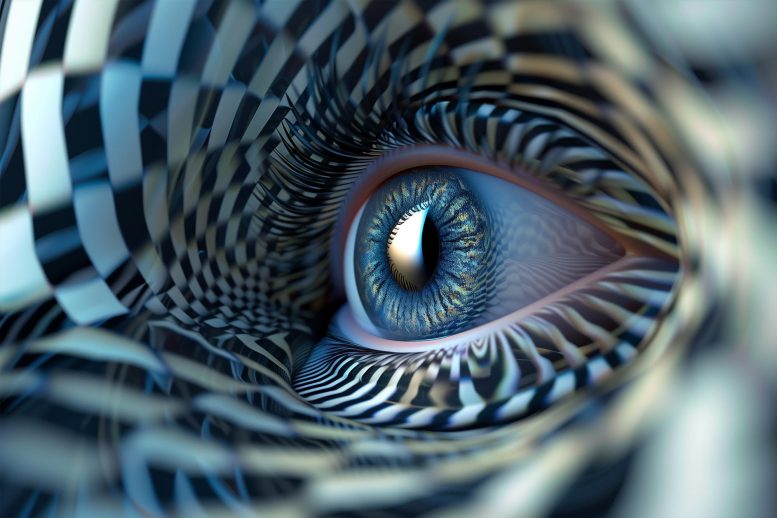Unveiling Vision: How Optical Illusions Shed Light on Neural Pathways

A recent study reveals that mice can detect neon color spreading illusions, providing valuable insights into visual processing. This information is brought to you by SciTechDaily.com.
Research has demonstrated for the first time that mice are susceptible to a particular type of visual illusion known as neon color spreading. The study stands out as it is the first to harness two investigative methodologies, electrophysiology and optogenetics, to explore this illusion. The findings derived from the mouse experiments help to resolve an enduring neuroscience debate concerning the neuronal levels in the brain responsible for brightness perception.
Optical illusions are familiar to most of us; they can be entertaining curiosities or constants in our everyday lives. For instance, you may believe the screen you are looking at is white, but in truth, you are seeing dense clusters of red, green, and blue elements that collectively give the impression of whiteness. A fast rotating wheel or propeller may give a fleeting impression of moving in reverse while accelerating. Optical illusions are not mere entertainments; they can also be valuable tools for understanding the eyes, nerves, minds, and brains.
One of the optical illusions commonly encountered is the classic neon-color-spreading illusion. You may glance at it and initially see a light blue circle contrasting slightly with a white background. However, the entire background is actually white - it appears as though the blue in the black and blue sections spills into the circle suggested by the blue lines' ends.
Associate Professor Masataka Watanabe from the University of Tokyo's Department of Systems Innovation seeks to comprehend the essence of consciousness. He has chosen optical illusions as one of many ways to investigate this complex subject. His recent research questioned whether specific illusions effective on humans would also work on mice. The results showed that they do, but why does this matter?
According to Professor Watanabe, learning that the neon-color-spreading illusion functions on both mice and humans is beneficial to neuroscience. Mice make useful test subjects when human subjects are unsuitable. To fully comprehend perceptual experiences within the brain, certain methodologies are necessary. These include electrophysiology, where neural activity is measured using electrodes, and optogenetics, a process that uses light pulses to control the firing of specific neurons in a living brain.
Watanabe's experiment is the first to concurrently use electrophysiology and optogenetics on animal test subjects exposed to the neon-color-spreading illusion. This unique approach allowed his team to pinpoint the exact brain structures responsible for processing the illusion.
Watanabe explains that visual stimuli impacting the eye are transported to the brain via nerves, received by layers of neurons labelled V1, V2, etc. V1 is the initial, most fundamental layer, with V2 and following layers considered as elevated tiers. There's ongoing debate in neuroscience regarding the function higher layers perform in brightness perception.
The mouse experiment indicates that V1 neurons respond not only to the illusion but also to a non-illusory pattern of the same kind. However, when the illusory pattern was shown to mice, V2 neurons significantly modulated the activity of V1 neurons. This confirmed the role of V2 neurons in brightness perception.
The experiment has proven that mice are effective models for this area of neuroscience. Watanabe plans to use these initial findings to clarify the neural mechanism of consciousness.
Further reading: “Brightness illusions drive a neuronal response in the primary visual cortex under top-down modulation” by Alireza Saeedi, Kun Wang, Ghazaleh Nikpourian, Andreas Bartels, Nikos K. Logothetis, Nelson K. Totah and Masataka Watanabe, published 23 April 2024, Nature Communications. DOI: 10.1038/s41467-024-46885-6




